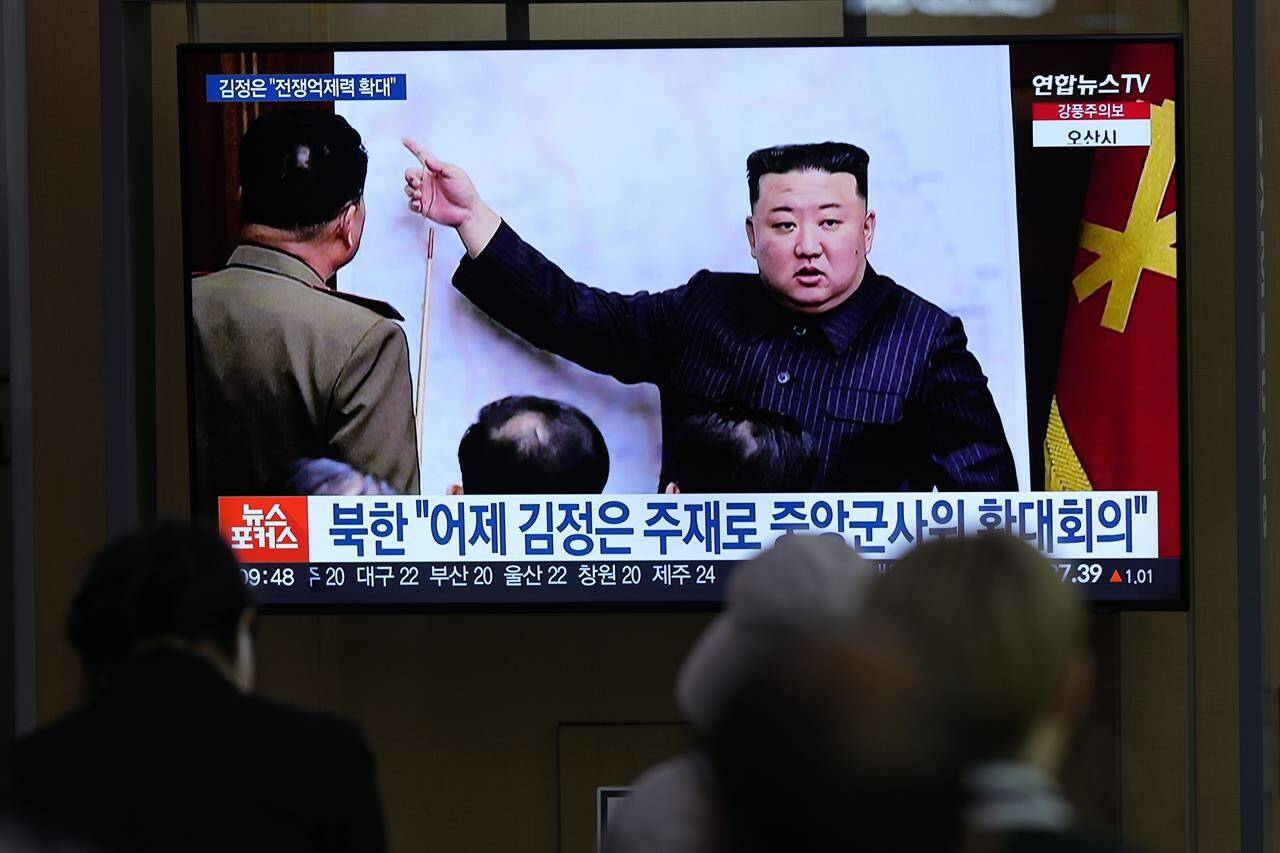North Korea launched a ballistic missile toward the sea between the Korean peninsula and Japan on Thursday, prompting Japan to order residents on an island to take shelter as a precaution.
South Korea’s Joint Chiefs of Staffs said the North Korean missile flew toward the waters between the Korean Peninsula and Japan but gave no further details, such as how far it flew and exactly what type of weapon the North launched. Japan said the missile landed in waters not did not immediately elaborate.
Earlier, the launch had prompted the Japanese government to urge people to seek shelter on the northernmost island of Hokkaido. Japanese media later reported that the Japanese government retracted the alert and emergency notice to local governments, saying there was no possibility of a missile landing in the Hokkaido area.
The launch, the latest in the North’s barrage of weapons tests this year, came days after its leader Kim Jong Un vowed to enhance his nuclear arsenal in more “practical and offensive” ways.
Japan issued a similar evacuation order in October last year when a North Korean intermediate-range missile flew over Japan in a launch that demonstrated a potential to reach the U.S. Pacific Territory of Guam. At the time, Japanese authorities alerted residents in its northeastern regions to seek shelter and halted trains, although no damages were reported before the weapon landed in the Pacific.
This year, North Korea has launched about 30 missiles in response to South Korean-U.S. military drills that it views as a rehearsal for an invasion. South Korean and U.S. officials say their drills are defensive in nature and were arranged to respond to North Korea’s growing nuclear and missile threats.
During a military meeting Monday, Kim reviewed the country’s frontline attack plans and various combat documents and stressed the need to bolster his nuclear deterrent with “increasing speed on a more practical and offensive” manner, according to North Korea’s official Korean Central News Agency.
KCNA said that meeting discussed unspecified issues related to strengthening defense capacities and perfecting war preparations to counter the threat posed by its rivals’ military drills.
North Korea has long argued that U.S.-led military exercises in the region are proof of Washington’s hostility against Pyongyang. The North has said it was compelled to develop nuclear weapons to deal with U.S. military threats, though U.S. and South Korean officials have steadfastly said they have no intention of invading the North.
There are concerns that North Korea could conduct its first nuclear test in more than five years since it unveiled a new type of nuclear warhead earlier this month. Foreign experts debate whether North Korea has developed warheads small and light enough to fit on missiles.
Thursday’s launch also came as South Korea accused North Korea of not responding to South Korean calls on a set of cross-border inter-Korean hotlines for about a week. The North’s alleged suspension of the exchange of messages on the communication channels could be worrisome because one of the hotlines’ roles is to prevent accidental clashes along the rivals’ disputed western sea boundary.
Earlier this week, South Korean Unification Minister Kwon Youngse, Seoul’s point man on the North, expressed “strong regret” over North Korea’s “unilateral and irresponsible attitude “over the hotlines. Kwon also warned unspecified legal action over the North’s use of South Korean assets at a now-stalled inter-Korean factory park in North Korea.
South Korea pulled its companies out of Kaesong in North Korea in 2016 following a North Korean nuclear test, removing the last remaining major symbol of cooperation between the rivals. North Korean state media recently showed what appeared to be South Korean commuter buses running in the streets of Kaesong and Pyongyang.
North Korea’s advancing nuclear arsenal is expected to be a major topic during a summit between South Korean President Yoon Suk Yeol and U.S. President Joe Biden later this month in Washington. Yoon’s government has been seeking stronger U.S. assurances that it will surely and swiftly use all its military capabilities, including nuclear, to protect South Korea in the event of a North Korean nuclear attack.
North Korea’s weapons testing spree has also raised the urgency for Seoul and Tokyo to strengthen their defense postures in conjunction with their alliances with the United States.
Experts say the discussions between world leaders at next month’s Group of Seven meetings in Japan could also be crucial for maintaining diplomatic pressure on North Korea after the U.N. Security Council had been rendered dysfunctional by confrontations between permanent members. Beijing and Moscow last year blocked a U.S.-led drive to tighten Security Council sanctions on North Korea over some of its major missile tests, underscoring a divide deepened by Russia’s war on Ukraine.
—Hyung-jin Kim And Kim Tong-hyung, The Associated Press
READ MORE: North Korea test-fires ICBM with range to strike entire US

